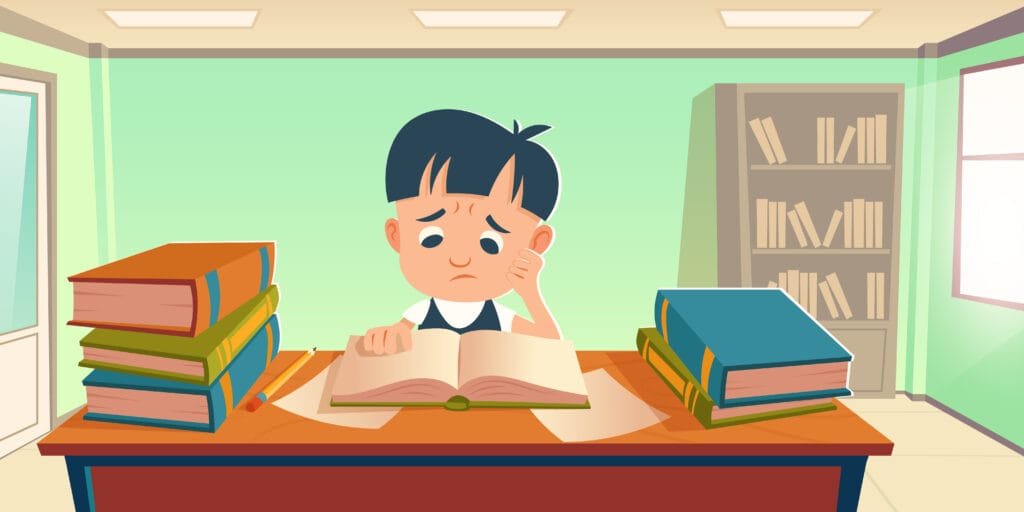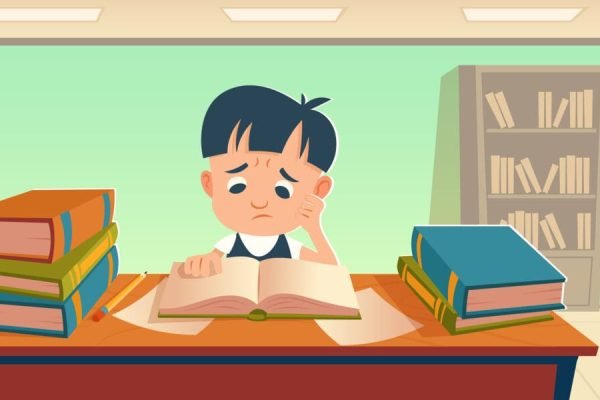According to a study conducted in school going children in Ernakulam district, Kerala, about 16.5% of students have a specific learning disability (SLD), which can affect their ability to read, write, or do math. Among those with SLD, around 12.6% have difficulty reading, 15.6% struggle with writing, and 9.9% have trouble with math. The likelihood of having SLD is higher in boys with low birth weight, a history of developmental delay, or a family history of poor academic performance, and may also depend on the school curriculum.
What is learning disability?
Learning disability is a neurological disorder that affects an individual’s ability to learn and process information. Simply put, children and adults with learning related issues may see, hear, and understand things in a unique way. It is not directly related to a person’s intelligence but Individuals with learning disabilities can have average or above-average intelligence.
It can manifest differently from person to person. For example, some may struggle with reading and writing, while others may have difficulty comprehending math concepts. Additionally, some individuals may find it challenging to understand and communicate with others. Despite the varying issues, these all fall under the umbrella of learning disabilities.

Identifying the Signs:
Detecting learning disability can be challenging due to the wide range of variations, but certain warning signs are common across different ages and types. To help identify potential issues, the following checklists outline some common red flags associated with difficulty in –
- reading, writing and / spelling.
- difficulty in understanding math concepts
- memory and recall
- social skills and communication
- coordintion and / motor skills
- processing and understanding spoken language
Diagnosing
A qualified professional, such as a clinical psychologist, can diagnose learning disability using a comprehensive assessment. The assessment may involve a range of tests and measures to evaluate the individual’s cognitive abilities, academic skills, and behavioral functioning. The tests may include measures of intelligence, memory, language skills, attention, and processing speed. The professional may also conduct interviews with the individual and their family members or teachers to gather additional information about their history and symptoms.
The assessment process typically involves a multidisciplinary team of professionals, which may include psychologists, educational therapists, special educators, speech-language pathologists, and occupational therapists. The team will review the assessment results and make an individualised plan and interventions based on the individual’s specific needs.
The Importance of Early Detection and Intervention
Children may start showing learning related problems from ta very age, but it become more noticeable when the child comes to grade 3 or 4. During this time, a child may have trouble with academic tasks like reading, writing, or math as mentioned above. Early detection of such problems and starting the interventions early in age plays a vital role in managing learning problems. The early we start, the lesser the child would struggle in school.
Closer Look on Various Types of LD
- Dyslexia: Dyslexia is a learning disability that affects reading and language processing. Child may have difficulty in picking out different speech sounds in words and learning how letters relate to those sounds. In this condition, the child’s vocabulary will develop at a slower pace and lead to issues with grammar, reading comprehension, and other language skills.
- Dysgraphia: Dysgraphia affects writing. People with dysgraphia may have difficulty with handwriting, spelling, and organizing their thoughts on paper. This condition can make it difficult for a person to think and write simultaneously. Poor handwriting characterizes it due to the person’s struggles with letter spacing, spatial awareness, and motor planning.
- Dyscalculia: Sometimes referred to as “math dyslexia,” dyscalculia affects an individual’s ability to understand and work with numbers. People with dyscalculia may have trouble with basic arithmetic, counting, and understanding math concepts. They may struggle to count money, tell time, perform mental math calculations, identify number patterns, difficulty to tell time and apply mathematical formulae.
- Dyspraxia: Dyspraxia is a form of developmental coordination disorder affecting fine and/or gross motor coordination in children and adults. Children may have difficulty in activities such as hopping, running, jumping, and catching or kicking a ball. They often avoid joining in because of their lack of co-ordination and may find physical education difficult.
- Nonverbal Learning Disabilities (NVLD): NVLD may affects an individual’s ability to understand and interpret nonverbal cues, such as facial expressions, body language, and tone of voice. People with NVLD may have trouble with social interactions, interpreting social cues, and understanding humor.
What You Need to Know about learning disabilities
Learning disabilities can be caused due to different factors like genetic factors, complications during or just after birth, psychological trauma, or environmental factors like inhaling poisonous gas by mothers during pregnancy. Furthermore, drug or alcohol consumption during pregnancy, poor growth in the uterus, low birth weight, and premature or prolonged labor are also some other contributing factors.
Research has shown that certain genetic conditions, such as Down syndrome, fragile X syndrome, and Turner syndrome, can increase the likelihood of learning related problems. Researchers have identified specific genes that may contribute to these problems.
Support Strategies for learning disabilities
Learning disabilities are a complex and can have a significant impact on a person’s academic and social life. Therefore, it is crucial to recognize their existence and the challenges they pose. However, with the right interventions, individuals with learning issues can thrive and reach their full potential. In doing so, we can provide the necessary support and accommodations to help them succeed academically and socially. Furthermore, it is important to understand the signs and symptoms of learning disabilities and diagnose them early for effective interventions. By doing this, we can ensure that such individuals can have equal opportunities to succeed in all aspects of life. Ultimately, by raising awareness and increasing understanding of learning disabilities, we can create a more inclusive and supportive society for individuals with diverse learning needs.

